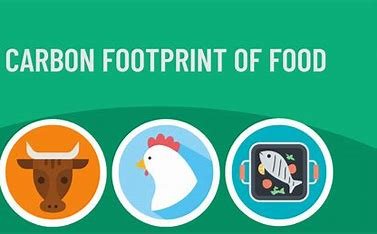Reducing your carbon footprint through food choices is a powerful way to contribute to environmental sustainability.

1. Eat More Plant-Based Foods:
- Benefits: Plant-based foods generally have a lower carbon footprint compared to animal products. Incorporating more fruits, vegetables, legumes, nuts, and grains into your diet can significantly reduce greenhouse gas emissions.
- How to Start: Try meatless Mondays or gradually replace meat with plant-based alternatives in your meals.
2. Choose Local and Seasonal Produce:
- Benefits: Local and seasonal foods require less transportation and storage, reducing carbon emissions. They are also fresher and often more nutritious.
- How to Start: Visit local farmers’ markets or join a community-supported agriculture (CSA) program to access seasonal produce.
3. Reduce Food Waste:
- Benefits: Reducing food waste conserves resources and minimizes the environmental impact of food production and disposal.
- How to Start: Plan your meals, store food properly, and use leftovers creatively. Composting food scraps can also help reduce waste.
4. Limit Processed Foods:
- Benefits: Processed foods often have a higher carbon footprint due to the energy and resources required for production and packaging.
- How to Start: Cook from scratch using whole ingredients, and choose minimally processed foods when possible.
5. Opt for Sustainable Seafood:
- Benefits: Sustainable seafood choices help protect marine ecosystems and reduce overfishing.
- How to Start: Look for certifications like the Marine Stewardship Council (MSC) label, and choose species that are lower on the food chain, such as sardines and mackerel.
6. Support Sustainable Farming Practices:
- Benefits: Sustainable farming practices, such as organic farming and agroforestry, promote soil health, biodiversity, and reduce the use of synthetic fertilizers and pesticides.
- How to Start: Choose organic, fair-trade, or sustainably sourced products when shopping.
7. Reduce Packaging:
- Benefits: Reducing packaging waste helps decrease the environmental impact of food production and disposal.
- How to Start: Buy in bulk, bring your own reusable bags and containers, and choose products with minimal or recyclable packaging.
8. Conserve Water:
- Benefits: Water-intensive foods, such as meat and dairy, have a higher carbon footprint due to the water required for livestock production.
- How to Start: Incorporate more water-efficient foods, like vegetables and grains, into your diet.
9. Grow Your Own Food:
- Benefits: Growing your own herbs, vegetables, and fruits reduces the need for transportation and packaging, and gives you control over sustainable gardening practices.
- How to Start: Start with a small garden, even if it’s just a few pots on your balcony or windowsill.
Conclusion:
By making mindful food choices, you can play a significant role in reducing your carbon footprint and contributing to a more sustainable future. Small changes in your diet and shopping habits can add up to a big impact.
